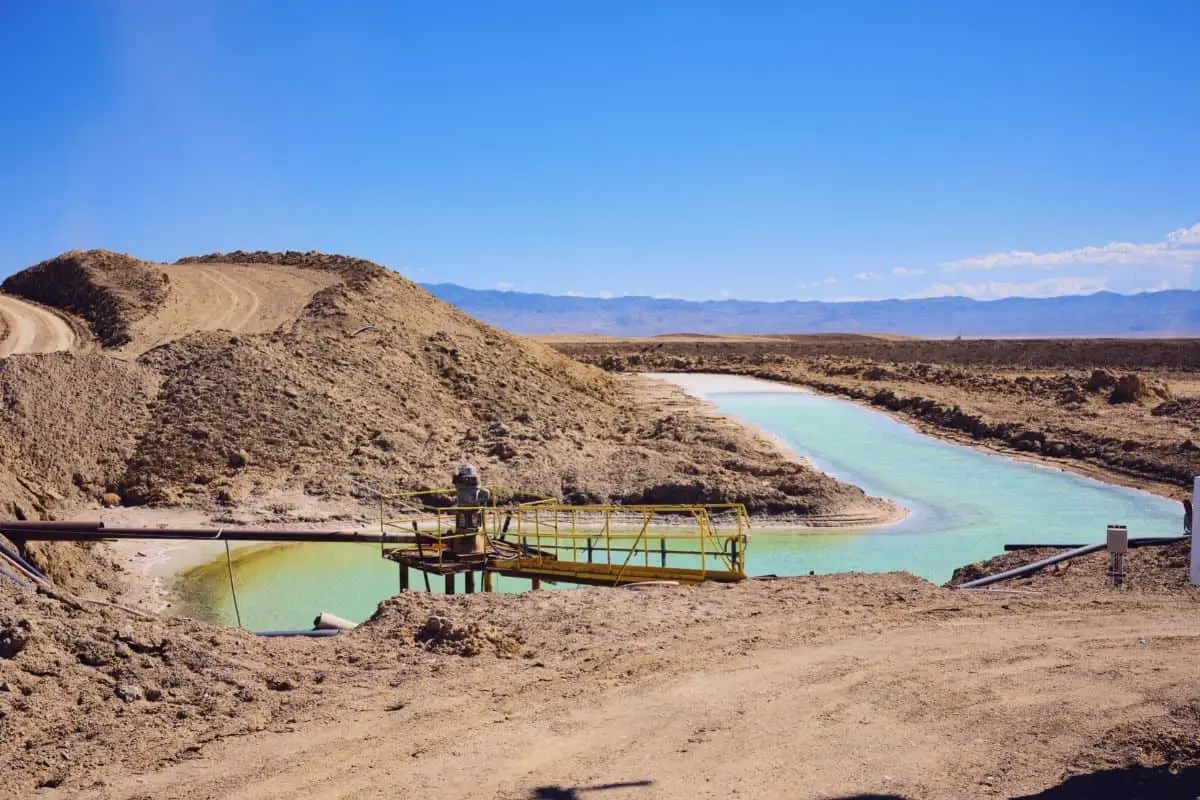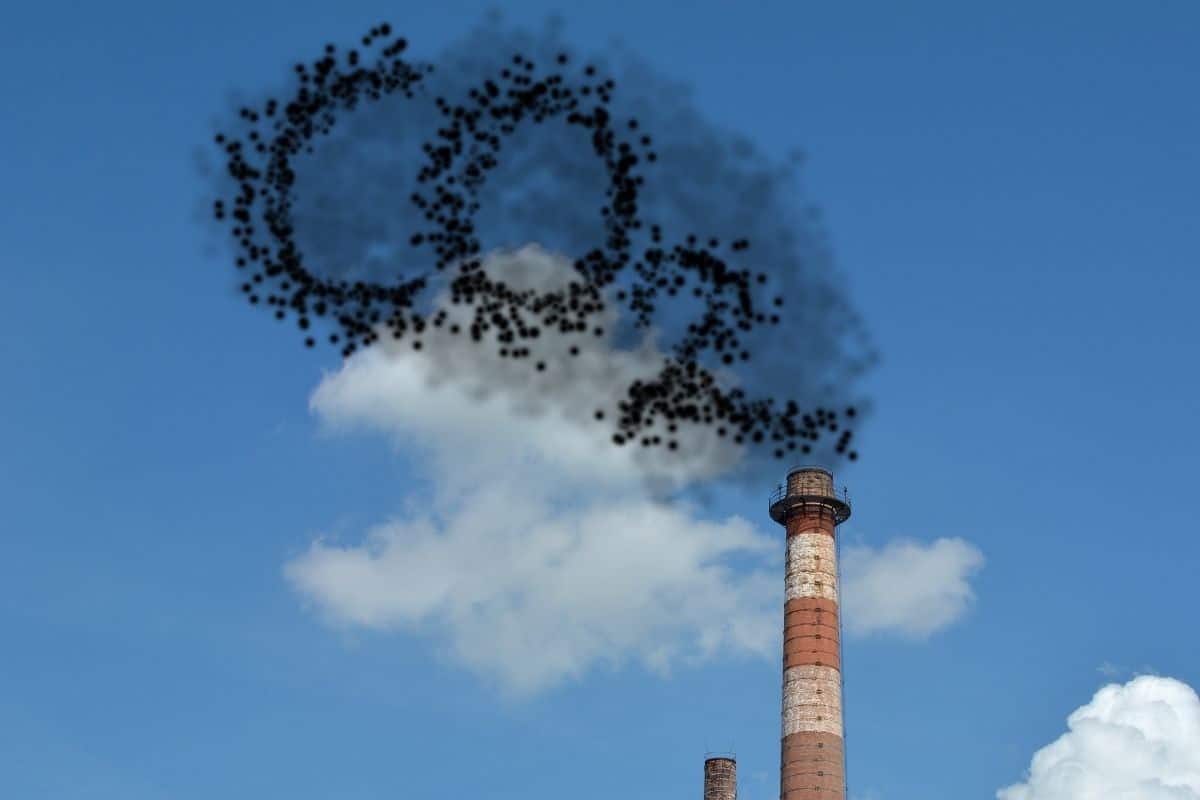With the increased use of electric cars, we need to look at the side effects of lithium mining to understand how this affects us now and in the future.

Why Do We Mine For Lithium?
The paradox of wanting to create a cleaner environment through the use of electric cars against the environmental disaster that is lithium mining is difficult to justify. Of course, it isn’t only electric vehicles that use lithium batteries, so do mobile phones, laptops, and power tools.
These are all things that we have been using every day for a long time. However, it is the recent push to drop our reliance on oil and the internal combustion engine that has brought the lithium battery into the spotlight.
Effects On Water
Lithium mining can have a devastating effect on water through pollution of local water supplies as well as the amount of water that is needed for the process.
Pollution
In 2016, thousands of fish were poisoned in the Liqi river in the Tibetan plateau as a result of a chemical leak from the Ganzizhou Rongda Lithium mine. Cattle and yaks were also found floating in the river having drunk the contaminated water.
It’s not the only incident; there had been three such incidents in the previous seven years. The potential for this kind of pollution isn’t confined to China; there are lithium mines in South America and Australia. All are at risk from water pollution due to lithium mining.
Misuse Of Water
Approximately 2.2 million liters of water are needed to produce just one ton of lithium. The lithium triangle covering parts of Bolivia, Argentina, and Chile in South America contains around half of the world’s supply of lithium but is one of the planet’s driest spots.
The water that is used for the extraction of lithium is often diverted from local communities and farmers that rely on it.
Carbon Dioxide Emissions

Lithium is currently extracted from underground brine reservoirs and hard rock mines. Ironically the machinery used to extract it uses fossil fuel energy and adds to the carbon dioxide in the atmosphere.
For every tonne of lithium extracted from hard rock mining, 15 tonnes of carbon dioxide are emitted into the atmosphere. In fact, the production of lithium-ion batteries is more material intensive than traditional internal combustion engines.
While it is hoped that the carbon dioxide emissions produced by lithium mining will be offset by the increased use of electric vehicles, the long term damage may not be known for many decades.
Many trees are cut down to enable lithium mining creating a negative impact on the amount of carbon dioxide that is absorbed. Fewer trees mean the carbon is not removed from the air while the process of deforestation itself relies on fossil fuel powered machinery.
Undoubtedly, lithium mining contributes to carbon dioxide emissions as part of the whole lithium battery industry. It is hoped that the extraction of lithium along with other parts of the battery manufacture can decrease its CO2 intensity sooner rather than later.
Health Effects
Lithium is a hazardous substance and exposure to it can cause serious health issues. It can have serious consequences for the thyroid and kidneys. Lithium has been found in the drinking water of some Andean villages of Argentina.
Although the amounts are small the long term effects of ingesting lithium are unknown. This is particularly concerning for expectant mothers and small children.
In the air, lithium is an irritant and can adversely affect the lungs, nose, throat, and eyes. The effect on the lungs over a long period of time can result in fluid build up causing pulmonary edema, which is potentially life threatening.
Exposure to lithium can cause nausea, vomiting, and loss of appetite. Other more serious effects include headache, confusion, seizures, and coma although there is no evidence that anyone is currently being exposed to significant levels of lithium from mining.
Depletion Of Fertile Land
The diverting of water, deforestation, and contamination of water and soil have had an impact on the fertility of land around lithium mining areas. There are also mountains of discarded salt and canals filled with water that cannot be used.
The amount of water needed for the extraction of lithium means there is a reduction in the amount available to local communities and farmers. Some farmers have had to give up growing crops due to water shortages and contamination of the water supply.
One village close to a lithium mine in Chile has had to bring in trucks of potable water because their supply has been so severely hit. Without water, it is impossible to grow crops, and the ability to provide for themselves is seriously impacted.
The Aymara, an indigenous community, grows quinoa, raises livestock, and sells flamingo eggs, and salt, all traditional forms of income generation which, after hundreds of years, are now being threatened by lithium mining in their area.
As with any extraction process there are visible and invisible scars on the landscape and surrounding areas. Soil erosion is caused by the removal of trees and vegetation to make way for the lithium extraction. Without vegetation, the soil is prey to the wind and sun.
What Happens To The Waste?
The waste from lithium mining is another thorny issue. Due to the ever increasing demand for lithium mining, the mineral from hard rock has been embraced despite being much more difficult than evaporation from salt flats.
But this process involves the use of large quantities of sulfuric acid. A lithium-bearing mineral known as spodumene goes through a process called acid roasting.
The spodumene is heated to 2012 degrees Fahrenheit and then cooled, crushed and roasted again with concentrated sulfuric acid. Following the process, the resulting lithium carbonate is crystallized then heated, filtered, and dried.
The solid and liquid waste generated from this process is contained in tailing ponds and chemical lagoons. This waste can end up contaminating soil and water if not carefully contained and monitored.
Australia is one of the world’s largest producers of lithium using this process of extraction and produces a lot of waste in the form of chemicals.
Final Thoughts
The world’s demand for lithium is only going to increase and therefore the efforts to extract lithium from the earth in various ways will continue. The side effects of lithium mining are known, and some efforts are made to mitigate the negative impact on the environment.
Whether the conversion from the internal combustion engine to electric vehicles will maintain its current pace or increase will have a direct impact on the demand for lithium. If demand increases then there will be more need for processes such as extraction from spodumene.
Although more expensive, if the demand cannot be met by brine evaporation then this process most commonly carried out in Australia may become more common throughout the world.
The impact of extracting lithium from the salt flats of South America such as water pollution, soil degradation, and health issues will expand with increased production. Meanwhile, the waste produced through lithium mining from rocks will also become a bigger problem.
Only time will tell what the lasting effects will be.
- Tesla Charger Installation Cost (Home Setups) - March 1, 2024
- Tesla Phone Key Disconnected (Troubleshooting Guide and Quick Fixes) - March 1, 2024
- Tesla FSD 12 (Explained) - March 1, 2024